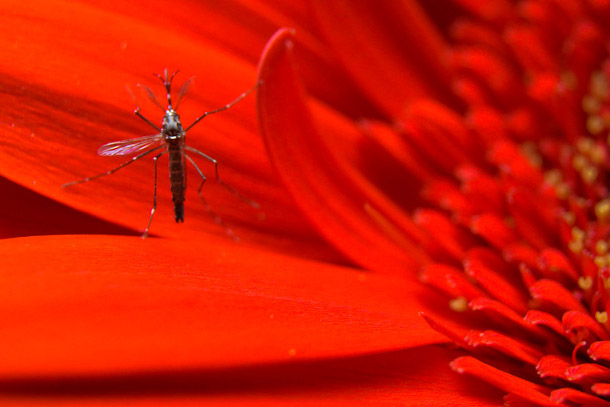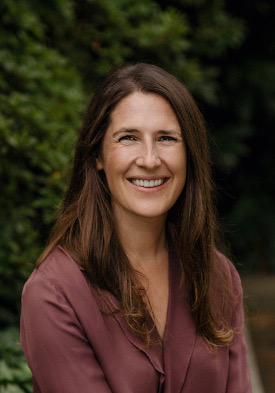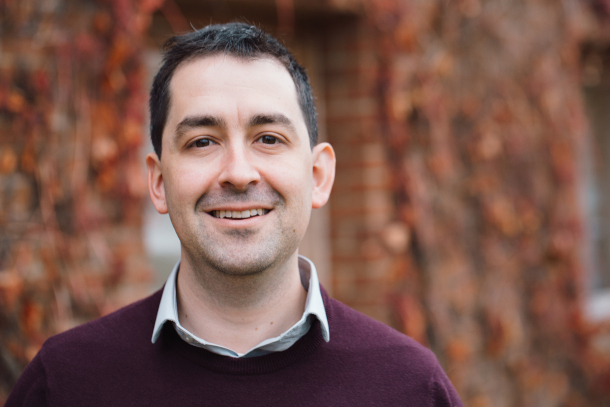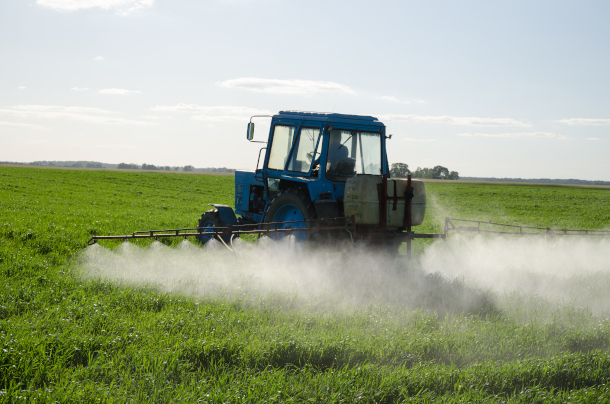EPA Approves GMO Mosquito Trials + Court Finds EPA Violated Pesticide Safety Procedures
Published: July 8, 2020

Oxitec’s second generation “AA” friendly mosquitoes are genetically engineered so that all female offspring die at the larval stage. The females are the ones that bite and thereby spread disease from their saliva. (Photo: Courtesy of Oxitec Ltd.)
(stream/download) as an MP3 file
EPA has given biotech company Oxitec the go-ahead to test the effectiveness of genetically modified mosquitoes in parts of Florida and Texas, generating environmental safety concerns.
Also, a federal appellate court recently found EPA did not adequately consider risks and problems when it approved the herbicide Dicamba for new uses. That approval has created huge problems for farmers who do not use the chemical or who don’t want to buy seeds of genetically modified crops that can tolerate it.
BASCOMB: Hi, I’m Bobby Bascomb and today on the Living on Earth Podcast we’ll be talking about genetic engineering.
The EPA recently approved a field trial of genetically engineered mosquitoes in Florida.
We’ll also hear about the law suit filed against EPA over its approval a new use for the herbicide dicamba on genetically modified crops.
But first, your support helps make it possible to bring you this podcast, so please contribute what you can.
Five dollars or more makes a difference.
You can donate right now at LOE.org and thanks!
[SFX MOSQUITO SOUND]
BASCOMB: No one likes mosquitoes, the annoying buzzing in our ears, the itchy bites they bring and of course the diseases they can transmit. In fact, some three quarters of a million people die each year from mosquito borne illnesses, indirectly making the lowly insect responsible for more human deaths than any other animal in the world. So, it’s not shocking that humans try to control mosquito populations. And now researchers with the biotech company Oxitec have come up with a genetically engineered mosquito that they hope will reduce mosquito populations without using ecologically damaging pesticides. Oxitec recently received EPA approval for their first US field trials in the Florida Keys this summer and Harris County, Texas next year. But the approval is controversial and has garnered push back from ethicists and molecular biologists including Natalie Kofler. She’s founding director of Editing Nature, a working group on the ethics of genetic modification and an advisor for the Scientific Citizenship Initiative at Harvard Medical School. Natalie Kofler, welcome to Living on Earth!
KOFLER: Thank you. Thanks for having me.
BASCOMB: So Oxitec is focusing on a genetic solution to control a specific species of mosquito, why are they starting there?
KOFLER: Yeah, so the mosquito that they're targeting is the species called Aedes aegypti. And the way that they're they've made a genetically modified version of this mosquito is they've introduced a gene into the mosquito that when it makes in the wild, it will pass on a gene to its offspring that causes lethality or death in the female offspring of that mosquito. In this way, all female mosquitoes from those meetings will die. And over time, as you can imagine, if there aren't females around, the population will collapse. So the intention is to reduce local mosquito populations. And in doing that be able to then hopefully reduce transmission of the diseases they carry.

Dr. Natalie Kofler is the founding director of Editing Nature, a working group on the ethics of genetic modification, as well as an adviser for the Scientific Citizenship Initiative at Harvard Medical School. (Photo: Courtesy of Natalie Kofler)
BASCOMB: And they recently got EPA approval to release some of their patented mosquitoes at sites in Florida and Texas. What are they trying to do there and how likely is it to be allowed to move forward?
KOFLER: So really what the EPA here is allowing Oxitec to do is release their mosquitoes into the wild and test to see if they are actually able, with their genetically modified mosquitoes, to reduce the population Aedes aegypti in those locations. But this is really a landmark decision. It's the first time a genetically modified mosquito has been approved for release in the United States. Oxitec did attempt to do this already in 2016 and 2017, in trying to release a previous version of this mosquito. And they actually were eventually rescinded their request, because of public pushback within the communities in Florida, where they were trying to release. So this is sort of their second attempt of doing this. And it's something that we're watching really, really closely to make sure that this moves forward in a responsible way.
BASCOMB: And what was the pushback from residents in Florida at the time?
KOFLER: I mean, generally concerns is probably what anyone would sort of be concerned about the idea of a genetically modified organism and being sort of the first test site in the US where that would be released into your into your common environments, right. There's no way to do these field trials in a contained way. The mosquitoes are literally you know, sent out into the air and fly around and are sent out to mate with other wild mosquitoes. And so people had a variety of concerns both for their own health as well as for the health of the environment. Of course, there's concerns at that point of what happens if a genetically modified mosquito were to bite me, you know, is there any risk to me, or an allergenic risk if a GM mosquito were to bite? This new strategy that they're using is a bit different because only female mosquitoes are able to bite and Oxitec's new version of this mosquito exclusively with releasing males. So there shouldn't be any risk there if it works as expected. And then, of course, there was also a lot of concerns around potential ecological damage. You know, what happens when you start collapsing populations in the wild in this way? So there's a lot of uncertainty here. And I think that's really the main sort of underpinning of why people have a lot of concerns. We just don't know enough yet about how this would work in the wild.
BASCOMB: What sorts of rules are in place for testing and oversight before these modified mosquitoes are released into the environment?
KOFLER: Well, so Oxitec you should know has already been releasing these mosquitoes for over a decade, at least certain versions of them, in Brazil and other countries in South America. So, we would not be the first site where release has occurred. And they have been doing assessment of these mosquitoes to see whether or not for example, they integrate into the wild as they shouldn't, to see if they can see collapse of the populations, they do see collapse of the populations. However, they have yet to prove any reduction in say Dengue fever transmission in Brazil, where they were doing field trials. And so, there are some preliminary data that shows that this technology could be effective in reducing mosquito populations. What we have concerns about is that there isn't necessarily adequate data about around ecosystem impacts, really adequate, stringent studies on potential health impacts and the changes in vector capacity that happens when these mosquitoes are specifically targeted through a genetically modified technology. And the third concern and a really major one is a lot of the data that's being presented to say the EPA in this case has been accumulated assessed and experiments designed by Oxitec themselves. So there's very little data coming from third party independent researchers.
A capsule of GM Mosquito eggs held by an Oxitec scientist. The tests in Florida are for release from boxes spread in strategic locations (sometimes in human populated areas), and Oxitec is developing egg capsules for more efficient releases. Continuous release is required to prevent recolonization by the Aedes aegypti mosquitoes. (Photo: Courtesy of Oxitec Ltd.)
BASCOMB: So you're concerned then that maybe there's not enough oversight, not enough independent oversight for this?
KOFLER: Yeah, I'm concerned that there's not enough independent oversight. I'm concerned that there's not enough interdisciplinary oversight. You know, these are really complex decisions that are being made. You need to have ecologists, you need to have public health experts, you need to have vector biologists, you need to have ethicists, and geneticists all at the table to make these choices. And so I also have concern that there isn't even the broad amount of expertise that needs to be there. And of course, it's also concerning when it's a, when it's a for profit company. And in some ways, they have a lot of vested interest to make sure that they do this well and safely or that, and they, because they could lose a lot of money and they could lose, you know, trust in their product. But at the same time, it leads to a lot of opacity in this process. And so I think that's concerning as well is that it needs to be more transparent and there's a lot of parts of the EPA submission that the public is generally not allowed to access because it's, you know, under patent protection and things like that. So there's a really strong justice argument here where those people that live in those environments have the right to the decisions that are being made about release of genetically modified mosquitoes into their communities. And right now, our regulatory processes do not engage the public even close to the level that they should be to make these choices fairly.
BASCOMB: What about the ecological impacts of suddenly reducing the population of a species of mosquito? I mean, plenty of birds and bats rely on mosquitoes as part of their diet. And I've heard of some species of orchids that are only pollinated by mosquitoes.
KOFLER: The general belief is that there are you know, in the world there's thousands of different mosquito species and even in these locations where the Aedes aegypti GM mosquito would be trialed, there are other mosquito species present. So the idea is that you could have other mosquito species fill those voids in a way that may actually in some ways if it could be done safely more environmentally sustainable than sort of doing broad application of pesticide for example, which would kill all mosquitoes and perhaps many other insects as well. So there's the possibility that if it's done well, it could actually be a more environmentally responsible measure. Again, this comes back to the situation of just how little we still know. And there's a lot of uncertainty. And I think we need to be understanding the unknown risks, you know, or at least acknowledging the unknown risks of what could happen when you start messing with food networks this way. And I think the second issue that needs to be really strongly considered, you know, with this appreciation of the intricate link between environmental health and human health, you know, is what happens when you specifically target one vector of a disease is another vector going to step in another mosquito species that may be more difficult to control that might be even more able to spread the disease more easily, and be more virulent. And these are really major concerns that again, we still don't have have the answers to.

Dr. Nathan Rose is Head of Regulatory Affairs at Oxitec. (Photo: Courtesy of Oxitec Ltd.)
BASCOMB: Natalie Koffler is a molecular biologist and founding director of Editing Nature. Natalie, thank you for taking this time with me today.
KOFLER: Thanks so much for having me.
BASCOMB: For a response we spoke with Nathan Rose, Head of Regulatory Affairs with Oxitec. He told our producer that the EPA reviewed thousands of pages of data Oxitec submitted to them.
ROSE: The EPA is independent. EPA is a government agency. And so they are the primary reviewers of this technology and of any technology that's it calls itself a pesticide or a bio pesticide as this is. And so EPA scientists that worked on this, included molecular biologists, they included ecologists, they included experts in modeling of what happens to populations.
BASCOMB: To hear more of Mr. Rose’s response go to the Living on Earth website, LOE dot org.
[MUSIC]
CURWOOD: To get the stories behind the stories on Living on Earth as well as special updates please sign up for the Living on Earth newsletter.
Every week you’ll find out about upcoming events and get a look at show highlights, and exclusive content.
Just navigate to the Living on Earth website loe.org and click on the newsletter link at the top of the page.
That’s loe.org.
[MUSIC]

A study published in May 2020 from the National Institutes of Health linked the herbicide dicamba to the increased likelihood of developing one of several kinds of cancer. (Photo: cjuneau, Flickr, CC BY 2.0)
BASCOMB: Genetic modification is often controversial in agriculture, especially when it is bundled with pesticide use. In 2018, the Environmental Protection Agency approved the herbicide Dicamba for its use on cotton and soybean plants genetically engineered to survive its application. But on June 3rd of this year, a federal appeals court in San Francisco ruled that the EPA ignored evidence of risk posed by the chemical and did not have enough evidence to support its approval. The court banned farmers from spraying Dicamba and companies from selling it. Four organizations filed the petition that led to that decision, including the Center for Biological Diversity. Lori Ann Burd is Environmental Health Program Director and a Senior Attorney with the Center.
She spoke with Living on Earth’s Steve Curwood.
CURWOOD: So tell me about Dicamba, this pesticide that the court ruled on, how does it work?
BURD: Well, Dicamba is a decades-old herbicide. It hadn't been very popular for a while because it is notoriously drift-prone, and it's also highly volatile. So it doesn't do a very good job at staying where it's supposed to stay. Typically, if you spray a plant with a herbicide, it kills the plant. And so it hadn't been in very widespread use. But just a few years ago, Monsanto and some others requested that EPA approve its use for genetically engineered soybeans and cotton that are designed to withstand what would normally be a fatal, over-the-top use of the herbicide. These are genetically engineered so that you can spray them with the herbicide and they won't die from it.
CURWOOD: So when you say that Dicamba is drift-prone, just how far does it and what does it do when it gets there?
BURD: So Dicamba can drift for miles in the right conditions. And when it gets to the new location, it kills plants. It's an herbicide. So it's designed to kill plants. And so that's why it's had so much controversy around it because when it drifts and then volatilizes again, it is killing plants that it's not intended to be coming in contact with.
CURWOOD: What are the health effects of Dicamba?
BURD: So the National Institute of Health put out a study in May finding that the use of Dicamba can increase the risk of developing multiple cancers, including liver cancer, bile duct cancer, acute and chronic leukemia and mantle cell lymphoma. So this is also not a benign herbicide for humans.
CURWOOD: So what was the experience of the agricultural community with Dicamba being used this way?
BURD: It's been a catastrophic few years, and that was one of the things that the court really highlighted multiple times in this decision. They said EPA failed to consider how Dicamba was damaging the social fabric of rural communities. There were thousands of complaints and farmers are not the complaining type. And so if they're calling their state Departments of Agriculture and saying my non-Dicamba tolerant crops have all been damaged, I've lost my garden, my trees have been killed. That's really significant. There was a murder over use of Dicamba that the court talked about. A neighbor murdered their neighbor because one neighbor complained about the Dicamba use and the neighbor who they were complaining to killed them.

Dicamba has been especially criticized due to its tendency to spread and damage crops in neighboring fields. (Photo: Aqua Mechanical, Flickr, CC BY 2.0)
CURWOOD: So let's go back to this recent case. What exactly was the decision that the Environmental Protection Agency made about Dicamba-based pesticides in 2018?
BURD: So they reapproved the Dicamba formulas for over-the-top use on cotton and soybeans at that time. They had approved it previously and we sued over that first approval also. And then EPA mooted that first lawsuit, which a decision was pending on by issuing a new decision.
CURWOOD: So talk to me about the statute here that this was done by the EPA. This is the Federal Insecticide, Fungicide, and Rodenticide Act. It's known by its acronym, FIFRA. Just how much power does the EPA have under this law?
BURD: It gives them an enormous amount of power and discretion. So unlike other environmental laws, like the Clean Water Act, or the Clean Air Act that have firm benchmarks, the test under FIFRA is whether there are unreasonable adverse effects. So FIFRA requires EPA to do a cost-benefit analysis of new pesticide applications. So they asked them to look at you know, what are the benefits? Growers want a new herbicide product to use for whatever reason, they have weeds. What are the costs? Are there significant environmental costs, social costs economic costs? So what the court found here is that EPA both ignored information about the harms that Dicamba was causing, and it minimized the harms that it did acknowledge. And in doing that cost-benefit analysis, the court found that they both discounted the damage that they were hearing about--that they knew about--in their analysis, and they refused to consider a lot of damage that they should have considered.
CURWOOD: To what extent does this ruling touch on the economic aspects of this case?
BURD: So on the economic impacts, what they looked at was harm to neighboring farms and other entities that experienced drift like resorts, home garden growers, people like that. And they also looked at the anti-competitive impacts of Dicamba, meaning that many growers who did not want to grow the Dicamba-tolerant soybean, were forced to buy the Dicamba-tolerant soybean seeds so that drift from their neighbor's Dicamba use would not kill their soybeans. This forced them to buy a product they did not want, they shouldn't have needed and they had to spend more money on which was unfair.
CURWOOD: So why do you think the EPA made the decision to approve Dicamba-based herbicides in the first place?
BURD: EPA's pesticide office, the Office of Pesticide Programs, has been in the pocket of the pesticide industry for quite a while now. Sadly, this was you know, the office that came out of the legacy of Rachel Carson to protect humans and the environment from dangerous chemicals that weren't being properly evaluated. But they've really taken a turn to being a rubber stamping agency for industry. Even when Dicamba was first proposed for this use, there was broad opposition. Agricultural experts, professors, agronomists--they all said this is going to be too dangerous. And you know, sometimes it's terrible to be right, and this is one of those instances.

The 9th U.S. Circuit Court of Appeals ruled that the EPA had substantially understated the risks that dicamba herbicides pose. (Photo: Ken Lund, Flickr, CC BY-SA 2.0)
CURWOOD: There's been a lot of coverage on farmers who had planted their crops earlier this year with Dicamba-resistant crops. And now if they follow the law, they can't use that as an herbicide to weed their plantings. So what does this really mean for those farmers and their crops, do you think?
BURD: This means that, once again, they've been let down by EPA and the pesticide industry. This is a crisis manufactured by them. In 2018, we were on the cusp of getting a decision from the court and instead they issued a new decision moving out that ruling and so we couldn't get certainty on what was going to happen on Dicamba then. We filed a new lawsuit on an expedited schedule. EPA took from January until summer of 2019 just to produce a small administrative record. The point I'm making is that if they had not issued a new decision in the winter time before growers made seed-purchasing decisions, if they had not delayed oral argument, it could have been issued much earlier in the season.
CURWOOD: So this ruling by the appeals court sounds like a pretty big slap in the face for the Environmental Protection Agency. What does it mean for this organization and how it has operated under FIFRA, the Federal Insecticide, Fungicide and Rodenticide Act?
BURD: EPA has been ignoring its mandate to protect human health and the environment. And this needs to stop. And in this rebuke, the Ninth Circuit Court of Appeals made abundantly clear that they recognized the fact that growers were forced to buy a product they did not want to buy in order to avoid the damage. But that would benefit industry because they were buying that product. EPA ignored all those things and it's been ignoring the real world harms the pesticides are causing to communities, to our land, to our health to animals for far too long. I do think, going forward, this decision is a powerful spotlight on how much this office needs to change and how urgently reform is needed to our pesticide law, how we need regulators in place that are going to care about protecting human health and the environment from pesticides, and not just regulators who are willing to bend over backwards to give the pesticide industry, whatever it wants, no matter what the cost.
BASCOMB: That’s Lori Ann Burd, the Environmental Health Program Director and a Senior Attorney with the Center for Biological Diversity speaking with Living on Earth’s Steve Curwood.
The EPA recently clarified that farmers who have already purchased Dicamba for this year will be able to use it until the end of July. We reached out to EPA for a response to this story. They sent a statement which reads in part,
“EPA stands by its order and will vigorously defend against attempts to limit the Agency’s authority to provide clarity and certainty to farmers.”
BASCOMB: The full statement is available on the Living on Earth website, loe dot org.
[MUSIC]
BASCOMB: Living on Earth is produced by the World Media Foundation. Our crew includes Naomi Arenberg, Paloma Beltran, Thurston Briscoe, Jenni Doering, Jay Feinstein, Anne Flaherty, Don Lyman, Isaac Merson, Aynsley O’Neill, Jake Rego, Kori Suzuki, and Jolanda Omari. Tom Tiger engineered our show. Alison Lirish Dean composed our themes. You can hear us anytime at L-O-E dot org, Apple Podcasts and Google Podcasts, and like us, please, on our Facebook page - Living on Earth.
we tweet from @livingonearth. And find us on Instagram at livingonearthradio.
Steve Curwood is our Executive Producer. I’m Bobby Bascomb. Thanks for listening!
ANNOUNCER: Support for Living on Earth comes from Sailors for the Sea and Oceana. Helping boaters race clean, sail green and protect the seas they love. More information at sailors for the sea dot org.
ANNOUNCER 2: PRX.
Links
The Guardian | “Plan to Release Genetically Modified Mosquitoes in Florida Gets Go-Ahead”
The Boston Globe | “Before Genetically Modified Mosquitoes Are Released, We Need a Better EPA”
Read the EPA’s statement on the approval, and accompanying public comments here
Click here to listen to Living on Earth’s segment on genetic engineering of mosquitos from 2012
St. Louis Post-Dispatch | “Court Rules Dicamba Illegal on Crops. Bayer Stands to Lose Millions”
NPR Short Wave | “The Fight Over a Weedkiller, in the Fields and in the Courts”
Living on Earth wants to hear from you!
Living on Earth
62 Calef Highway, Suite 212
Lee, NH 03861
Telephone: 617-287-4121
E-mail: comments@loe.org
Newsletter [Click here]
Donate to Living on Earth!
Living on Earth is an independent media program and relies entirely on contributions from listeners and institutions supporting public service. Please donate now to preserve an independent environmental voice.
NewsletterLiving on Earth offers a weekly delivery of the show's rundown to your mailbox. Sign up for our newsletter today!
 Sailors For The Sea: Be the change you want to sea.
Sailors For The Sea: Be the change you want to sea.
 Creating positive outcomes for future generations.
Creating positive outcomes for future generations.
 Innovating to make the world a better, more sustainable place to live. Listen to the race to 9 billion
Innovating to make the world a better, more sustainable place to live. Listen to the race to 9 billion
 The Grantham Foundation for the Protection of the Environment: Committed to protecting and improving the health of the global environment.
The Grantham Foundation for the Protection of the Environment: Committed to protecting and improving the health of the global environment.
 Contribute to Living on Earth and receive, as our gift to you, an archival print of one of Mark Seth Lender's extraordinary wildlife photographs. Follow the link to see Mark's current collection of photographs.
Contribute to Living on Earth and receive, as our gift to you, an archival print of one of Mark Seth Lender's extraordinary wildlife photographs. Follow the link to see Mark's current collection of photographs.
 Buy a signed copy of Mark Seth Lender's book Smeagull the Seagull & support Living on Earth
Buy a signed copy of Mark Seth Lender's book Smeagull the Seagull & support Living on Earth

